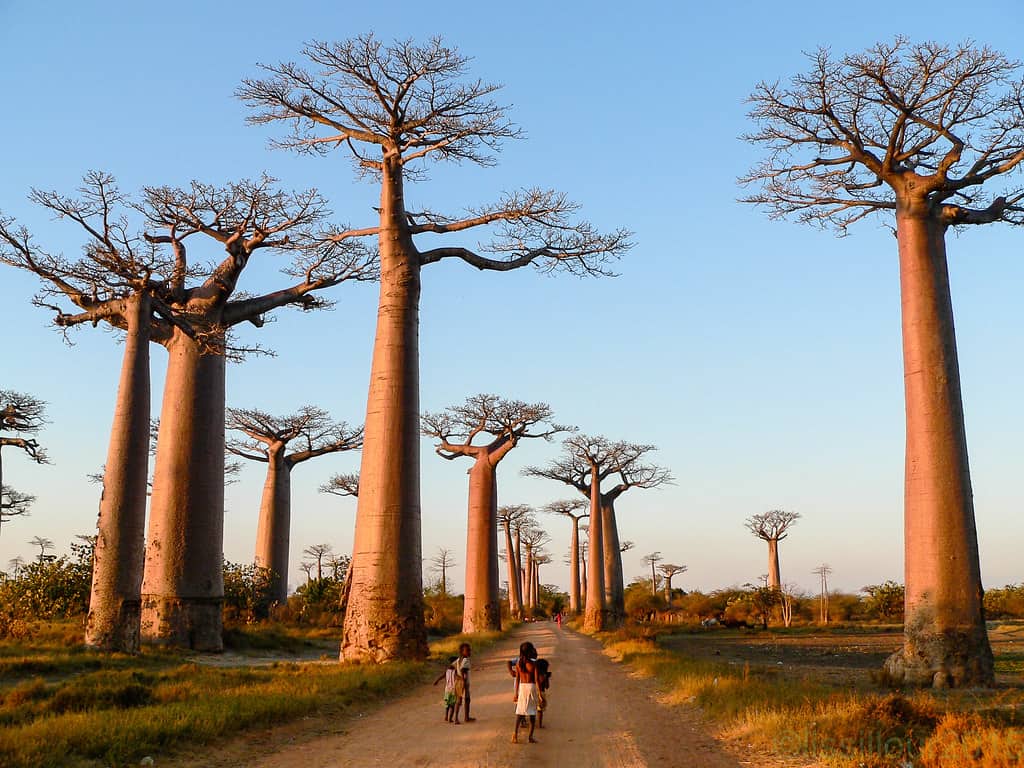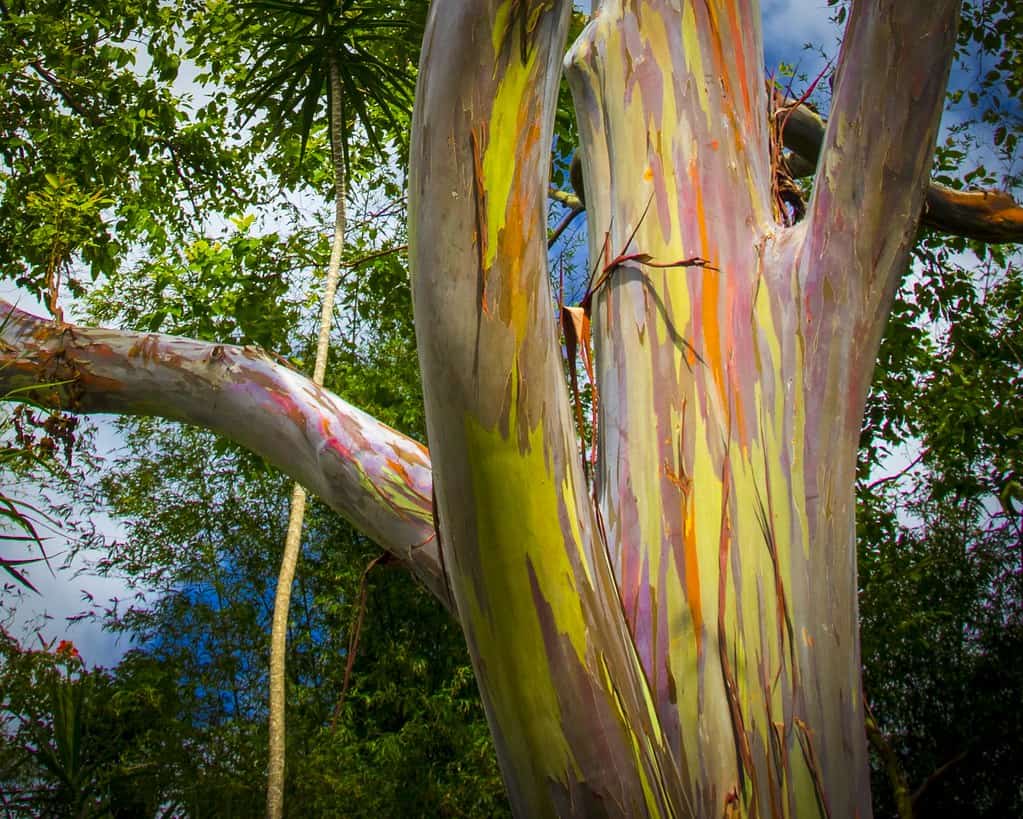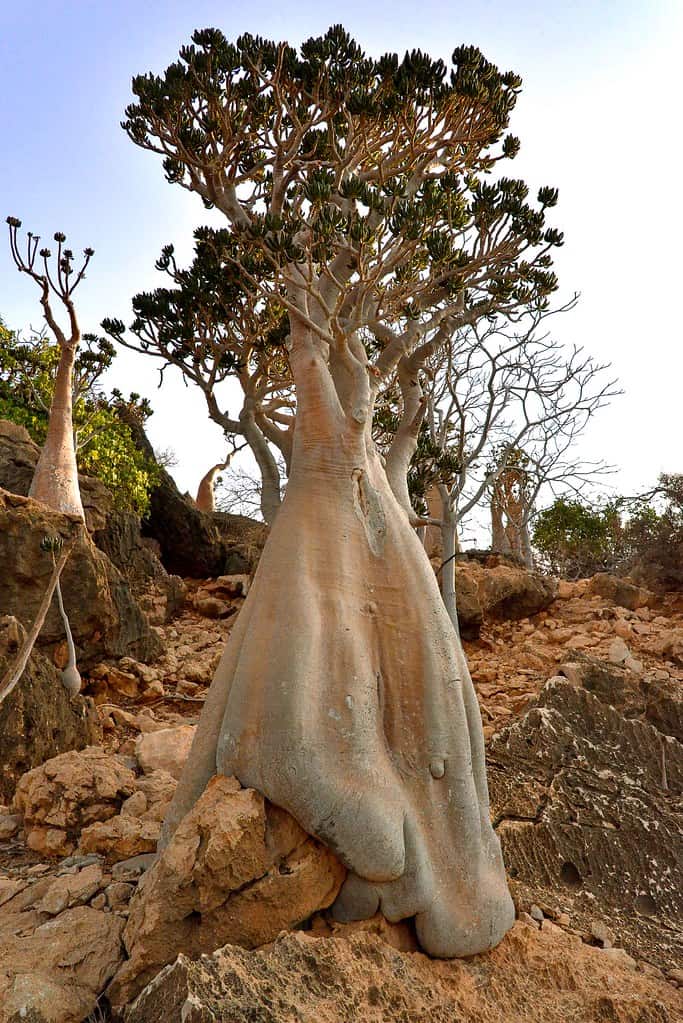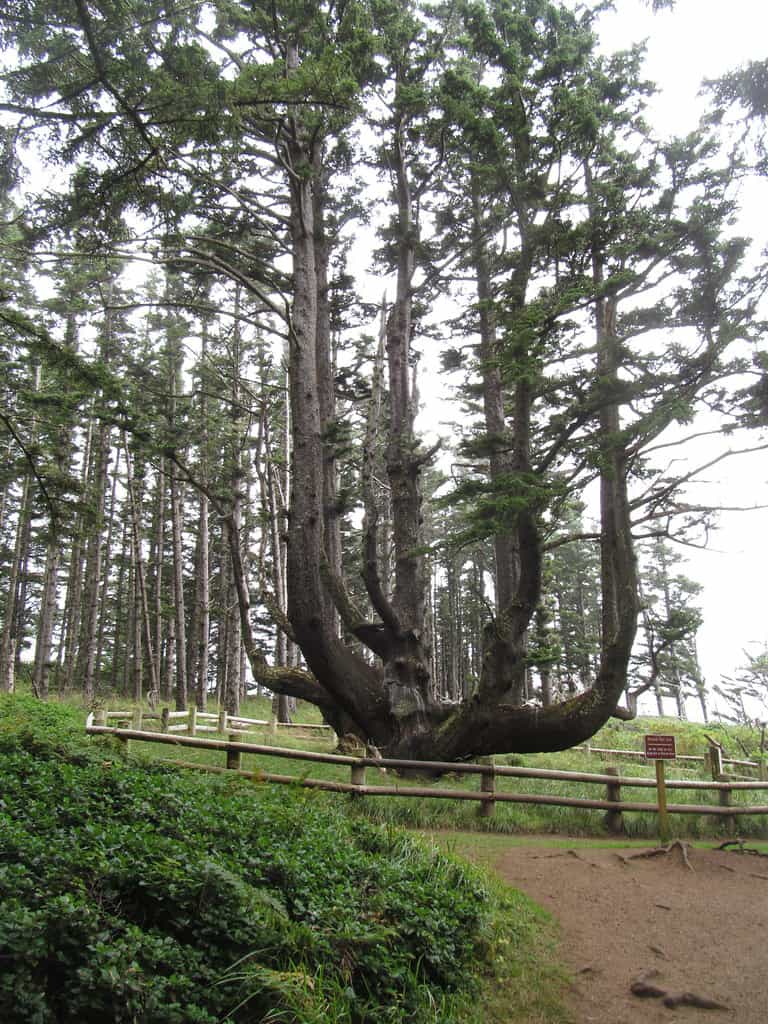The Baobab Tree

The Baobab tree, also known as the “upside-down tree,” is native to Africa, Madagascar, and Australia. Its peculiar appearance is due to its massive trunk, which can reach incredible sizes, resembling an inverted root system. With a lifespan of up to 6,000 years, the Baobab tree stores water in its trunk during the rainy season to sustain itself during long periods of drought. This adaptation allows the Baobab to survive in arid environments. Moreover, Baobabs have an impressive ability to hollow out their trunks, creating natural shelters that have been used as houses, bars, and even prisons.
Dragon’s Blood Tree

Native to the Socotra archipelago in Yemen, the Dragon’s Blood Tree stands out with its unique umbrella-like shape and dark red resin known as “dragon’s blood.” This distinctive tree has dense clusters of branches that resemble the mythical creature’s fiery breath, lending it its evocative name. The resin has been used for centuries in traditional medicine and dyes, with its vibrant hue captivating the imagination of many. The Dragon’s Blood Tree is a symbol of the Socotra islands and a testament to the remarkable adaptations that plants develop in harsh environments.
The Rainbow Eucalyptus Tree

The Rainbow Eucalyptus tree, native to the Philippines, Papua New Guinea, and Indonesia, is a botanical marvel that showcases nature’s artistic side. Its bark undergoes a stunning transformation, displaying a myriad of colors, including shades of green, blue, purple, and orange. As the tree sheds its bark, a vibrant new layer emerges, creating a breathtaking spectacle of color. The Rainbow Eucalyptus is not only visually captivating but also plays a vital role in maintaining the health of its ecosystems, as it provides shelter and food for a wide range of species.
The Bottle Tree

The Bottle Tree, also known as Brachychiton rupestris, is a peculiar tree native to Australia. Its distinctive feature is its swollen trunk, which resembles an upside-down bottle. The trunk’s unique shape serves as a water storage reservoir during periods of drought, allowing the tree to survive in arid environments. Adding to its unusual appearance, the Bottle Tree produces vibrant, bell-shaped flowers that bloom in clusters, creating a striking contrast against its smooth, bulbous trunk.
The Octopus Tree

Found in the Pacific Northwest of the United States, the Octopus Tree, scientifically known as the Sitka spruce or Picea sitchensis, has a peculiar growth pattern that resembles the tentacles of an octopus. Its branches grow horizontally and then droop downwards, creating a striking visual resemblance to the marine creature. The cause of this growth habit is still debated among botanists, but it is believed to be influenced by environmental factors such as wind, snow, and ice. The Octopus Tree is a captivating example of nature’s ability to adapt and create unique forms.
The Yucca Rostrata

The Yucca Rostrata, also known as the Beaked Yucca or Big Bend Yucca, is a striking and unusual tree-like succulent native to the Chihuahuan Desert of Texas and northern Mexico. Its defining feature is its tall, narrow trunk covered in dense, sharp, and rigid blue-green leaves that radiate from the top, resembling a giant burst of fireworks. This slow-growing tree can reach heights of up to 16 feet and is known for its resilience in arid conditions. The Yucca Rostrata produces creamy-white flowers atop a tall stalk, adding to its unique appearance.